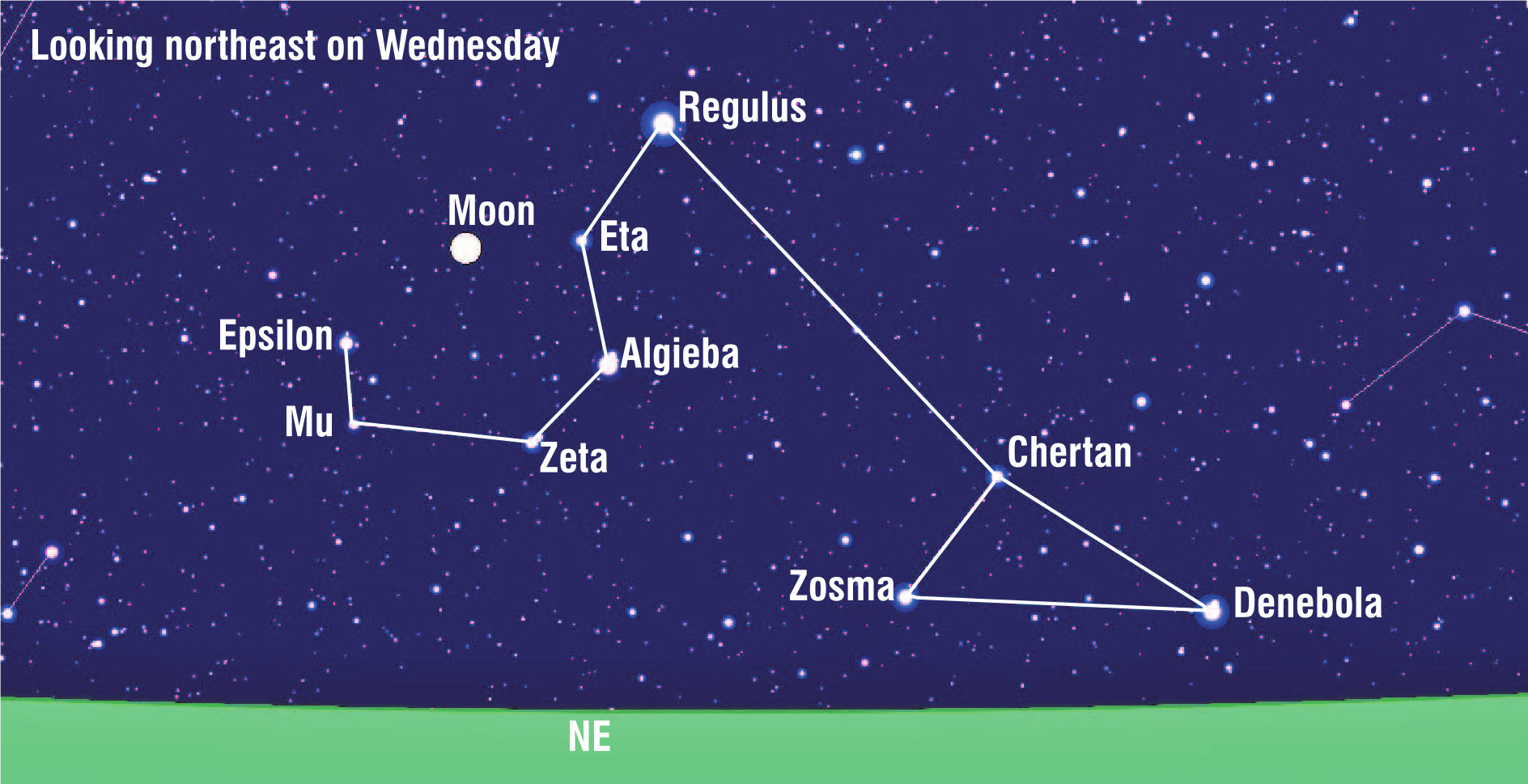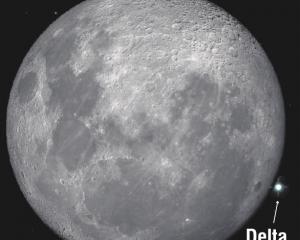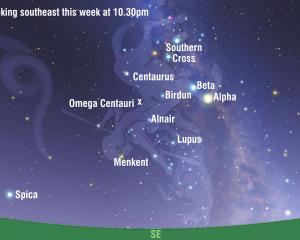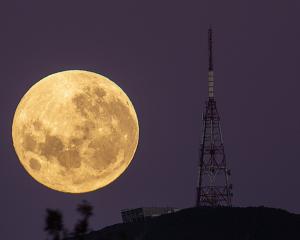

Interestingly, as the moon rises on Wednesday evening it will be located right in the heart of its heavenly offspring. This presents us with an excellent opportunity to explore a fascinating part of the sky. With the moonrise occurring just after 9pm on Wednesday, you will have to wait until at least 11pm for all the stars of Leo to clear the horizon.
Leo is one of the most recognisable constellations. From our part of the world, the head of the lion is upside down, looking like a crescent or sickle. Its appearance low in the northern evening sky tells us that autumn is fast approaching.
On Wednesday night the 99.7% illuminated moon will be shining brightly just above the semicircle of stars that collectively form the curved blade of Leo’s sickle. This month’s full moon occurs just before 6am on Thursday morning. Despite bright moonlight, it should still be easy to spot the bright stars that comprise the lion’s head.
The brightest star in the sickle is Algieba, whose name is derived from the Arabic word for a forehead. If you have a telescope it is definitely worth pointing it at Algieba. It is a wonderful double star with the two components looking like a pair of yellow diamonds. Astronomers have calculated that the stars are gravitationally bound, with an orbital period of more than 500 years. More recently, a large planet, many times heavier than Jupiter, has been found orbiting the brighter of Algieba’s stars.
The heart of the celestial Lion is marked by the blue-white star Regulus. Regulus is 79 light-years away from the Sun and is the 21st brightest star in the sky.
Leo’s tail is formed by a prominent triangle of stars which, in order of brightness are Denebola, Zosma and Chertan.
- Ian Griffin












